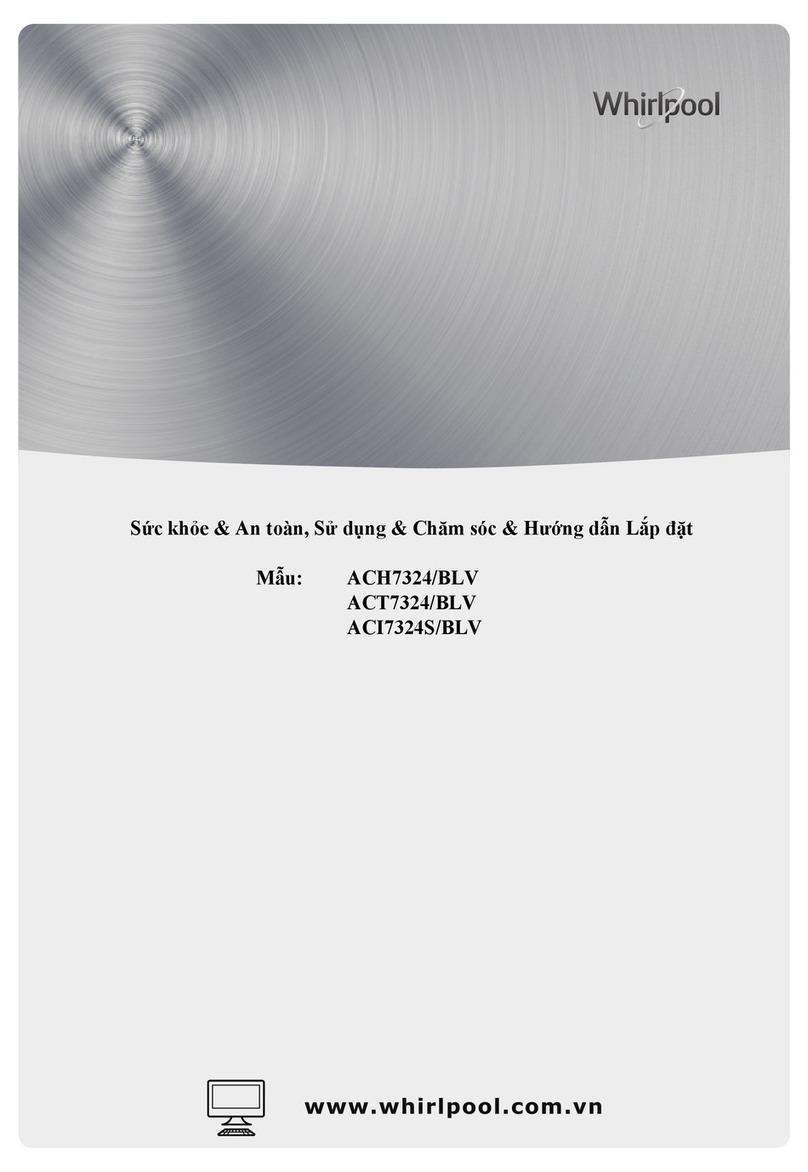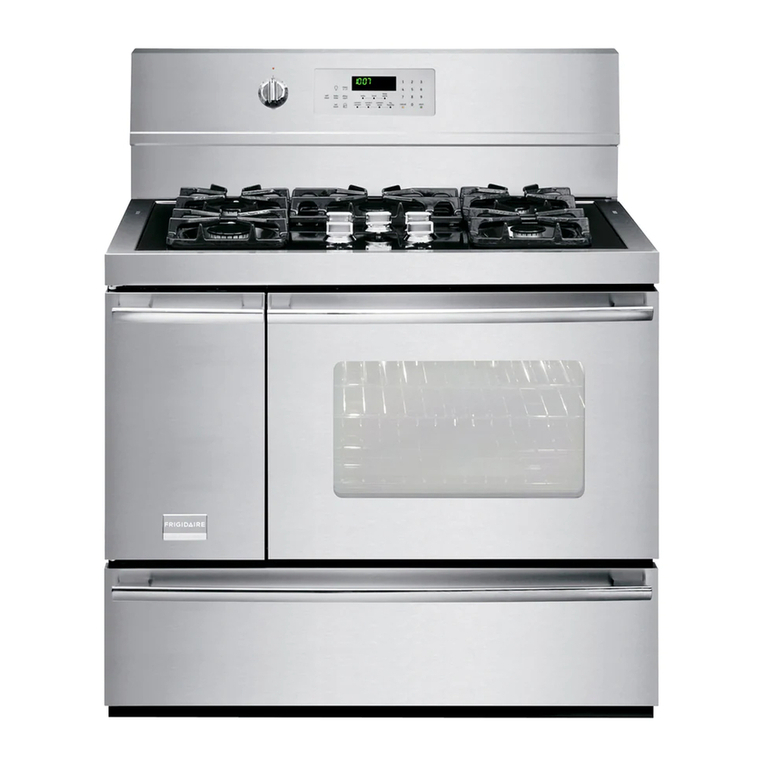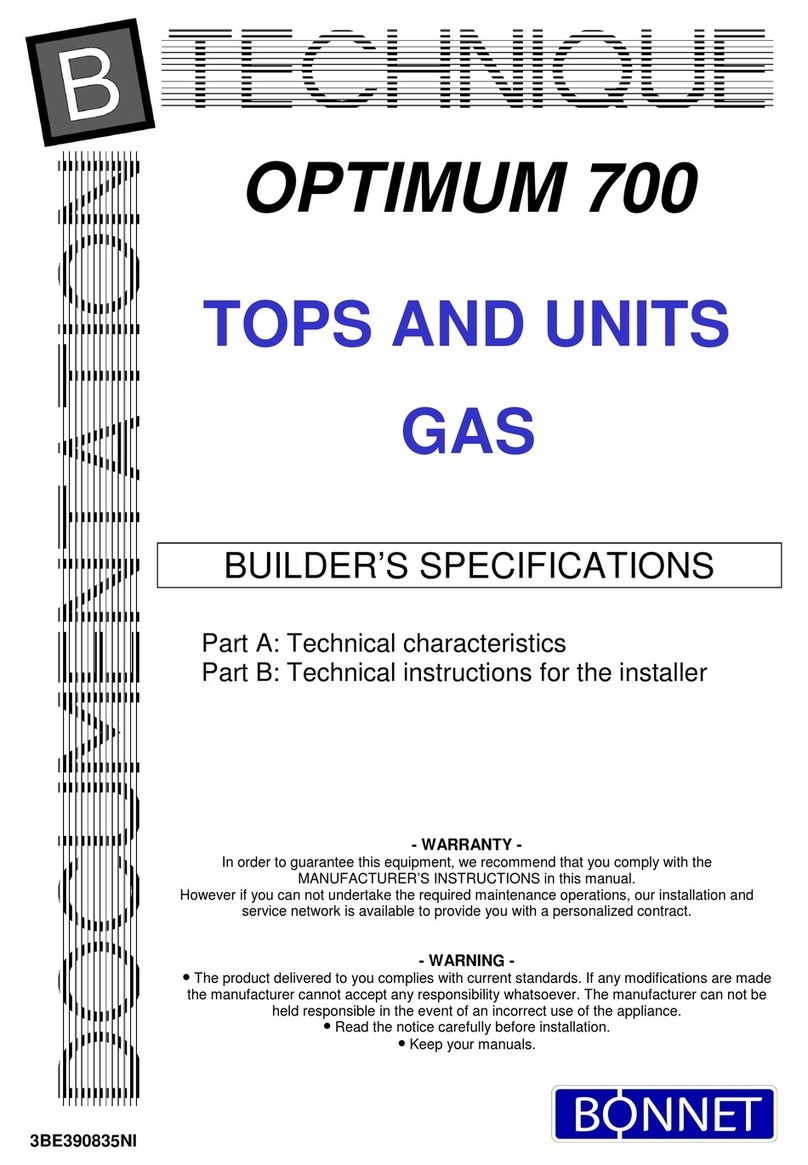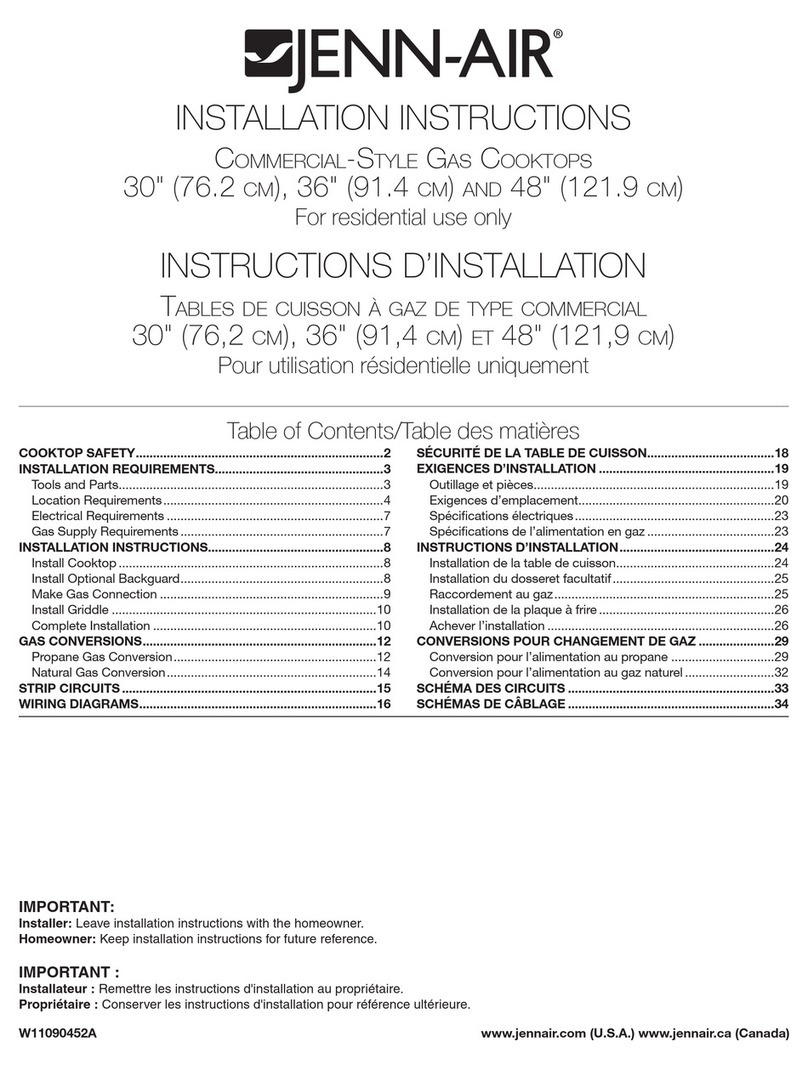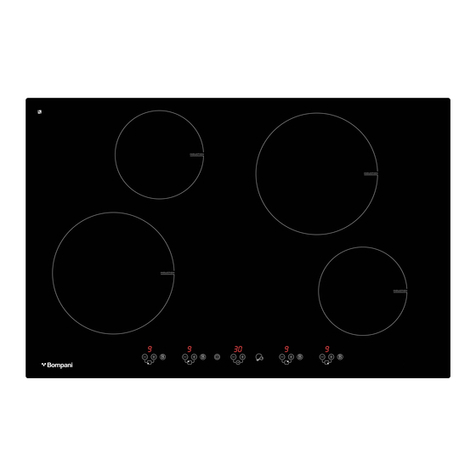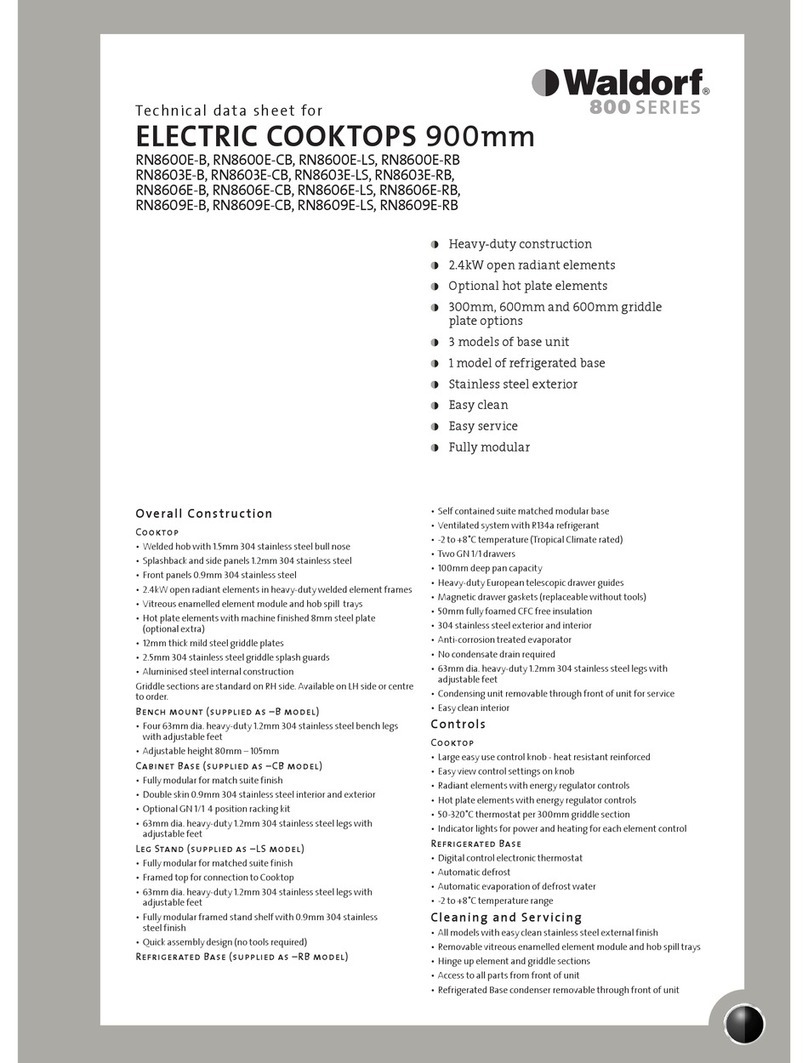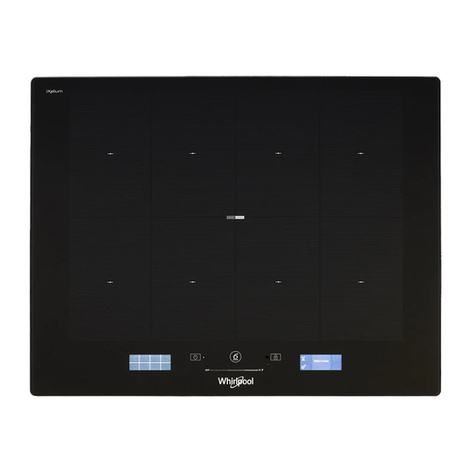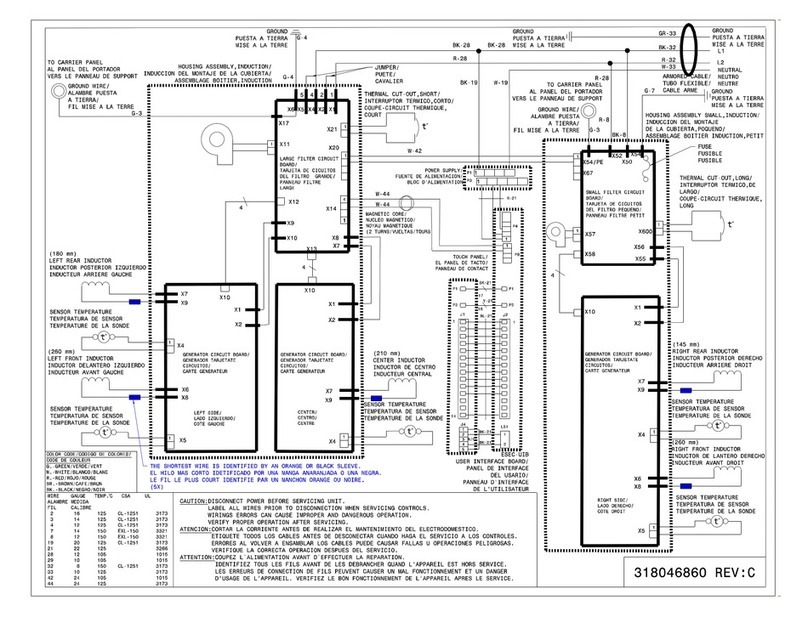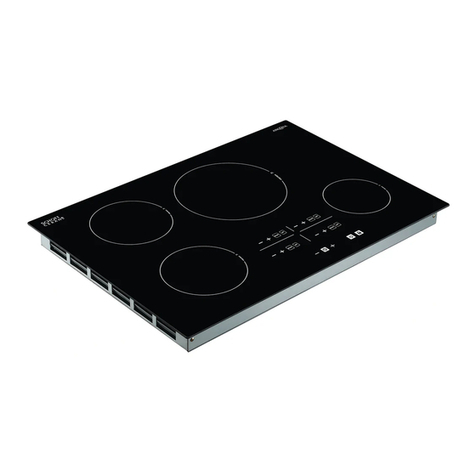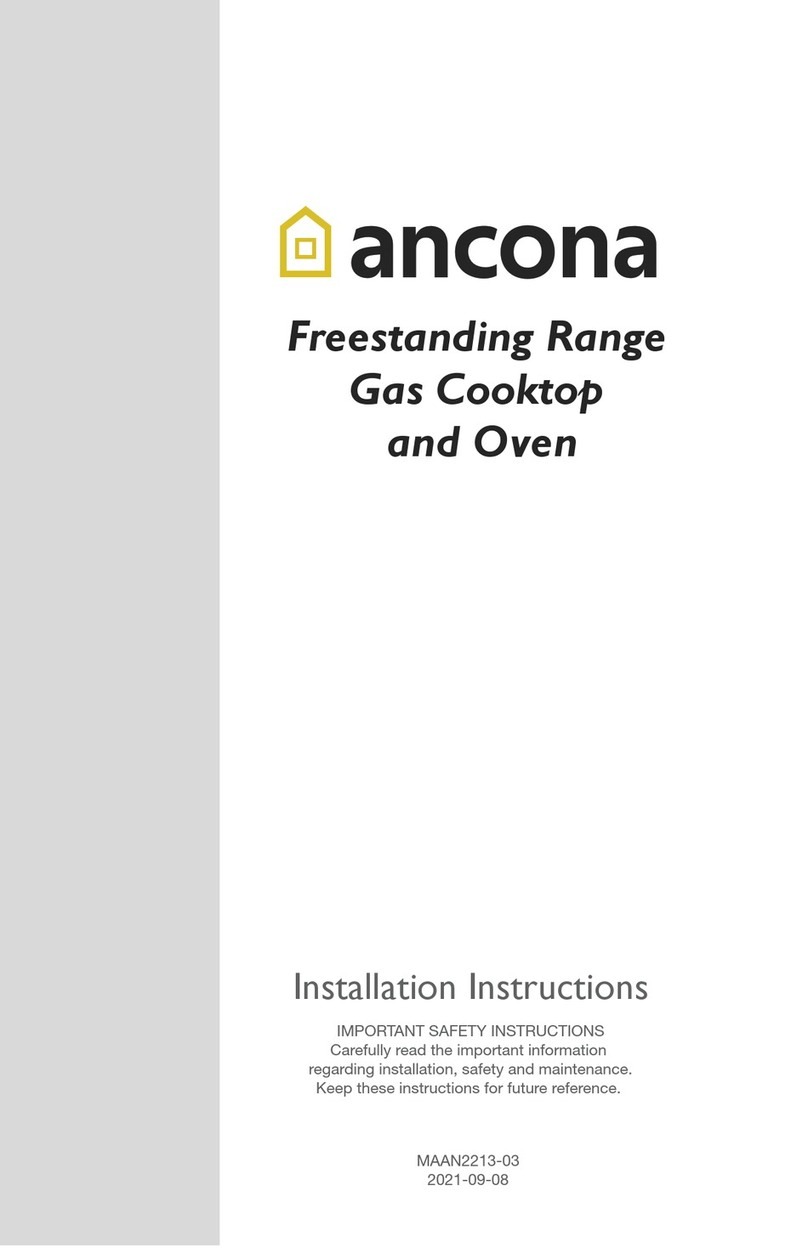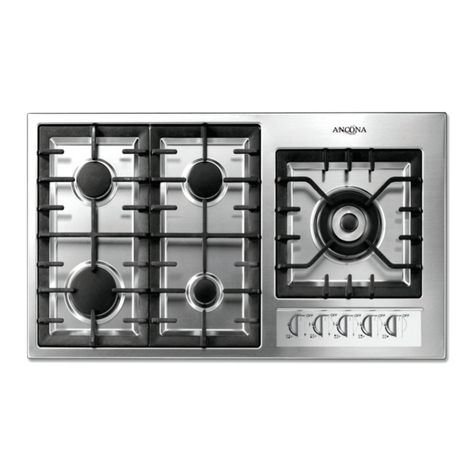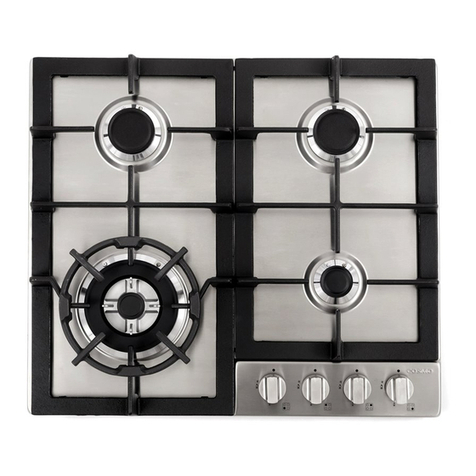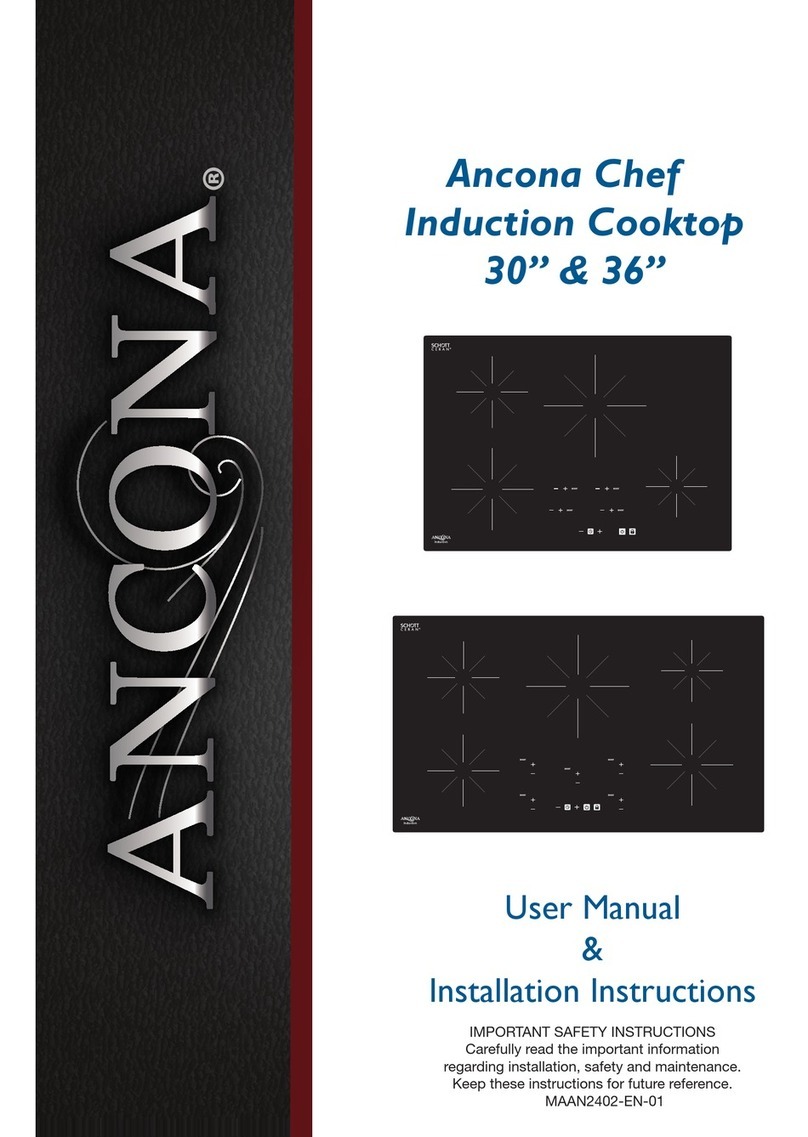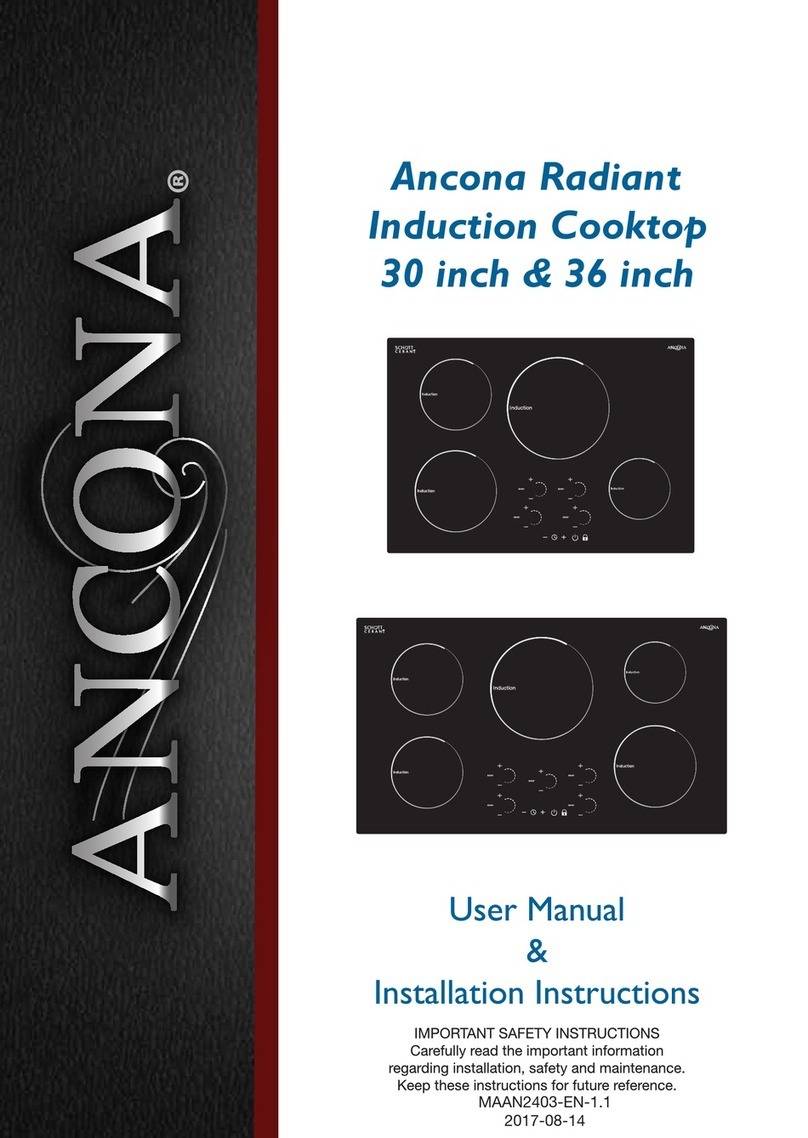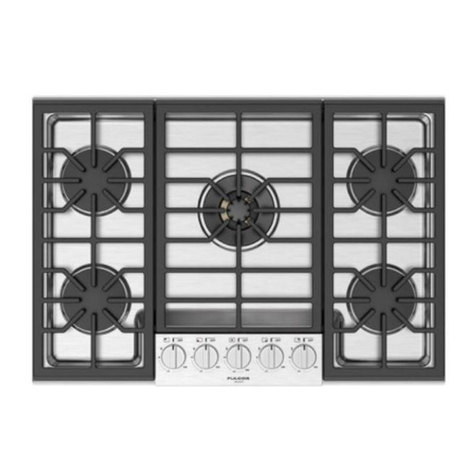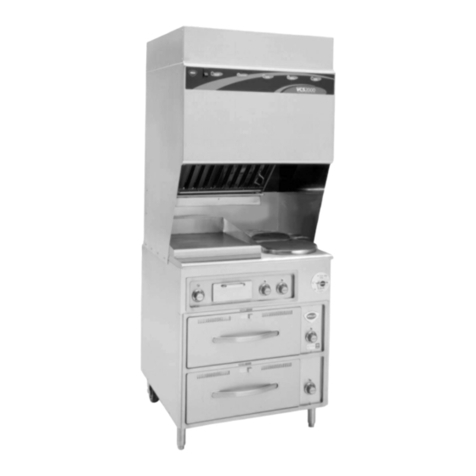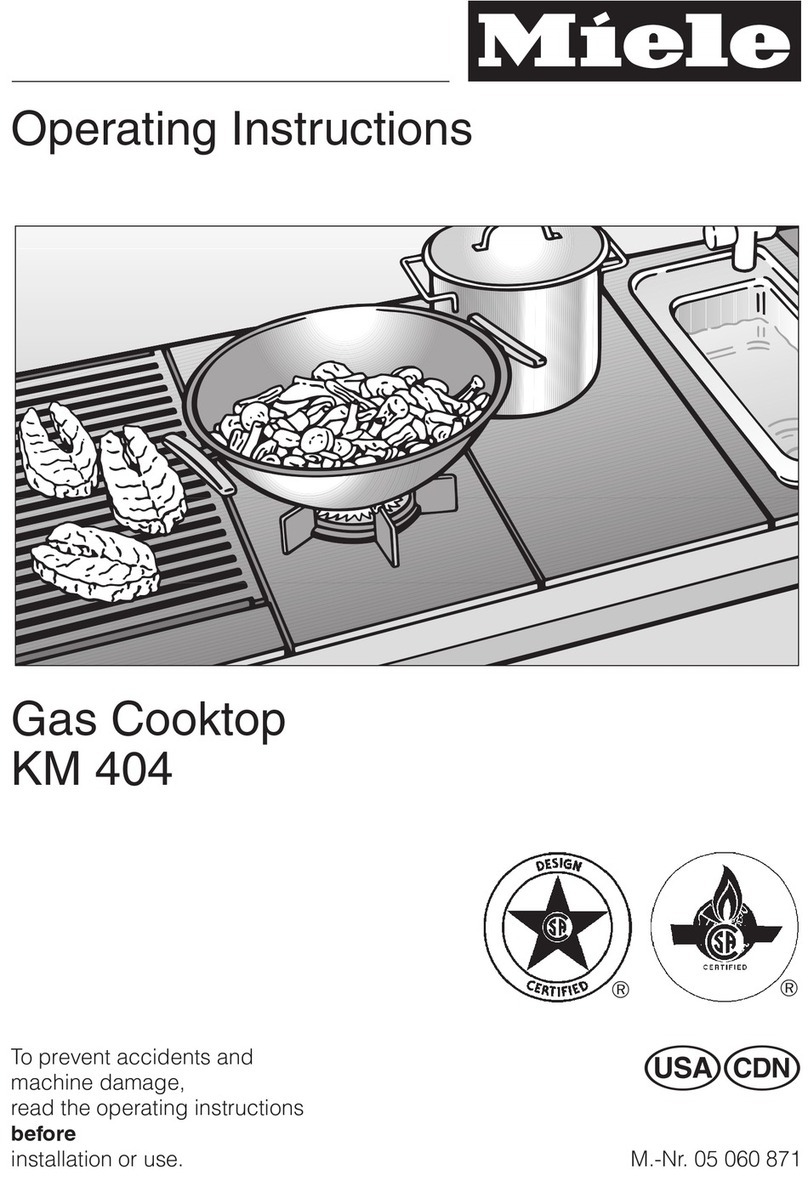
— 5 —
Important Safety Information
WARNINGS
• Donotstoreorusegasoline,liquidpropanecylinderor
other ammable vapors and liquids in the vicinity of this
or any other appliance.
• Gasleakscannotalwaysbedetectedbysmell.
• Gassuppliersrecommendthatyouuseagasdetector
approved by UL or CSA. For more information, contact
your gas supplier.
• Installationandservicemustbeperformedbyaqualied
installer, servicer or the gas supplier. Ask your dealer
to recommend a qualied technician and an authorized
repair service. Know how to shut off gas supply at
the meter and disconnect the electrical power to the
appliance at the circuit breaker or fuse box in case of an
emergency. Have the installer show you the location of
the appliance gas shut-off valve and how to shut it off
if necessary.
• Donotrepairorreplaceanypartoftheapplianceunless
specically recommended in this manual. All other
servicing should be done only by a qualied technician.
This may reduce the risk of personal injury and damage
to the appliance.
• If the information in this manual is not followed
exactly, a re or explosion may result causing
property damage, personal injury or death.
• Disconnectpowerbeforeservicing.
• Nevermodifyoraltertheconstructionoftheappliance
by removing panels, wire covers or any other part of
the product.
• Overheadrangehoods,whichoperatebyblowinga
downward air ow on to the appliance, shall not be used
in conjunction with gas appliances other than when
the hood and appliance have been designed, tested
and listed by an independent test laboratory for use in
combination with each other.
• Ifapplianceislocatednearawindow,NEVERhanglong
curtains or paper blinds on that window. They could
blow over the surface burners and ignite, causing a
re hazard.
• Ensurethattheroomiswellventilatedbykeepingtheair
intakes open and in good working order or by installing
an extractor hood with discharge pipe. If the appliance
is used intensively for a long time the effectiveness of
the ventilation will have to be increased, for example
by opening a window or increasing the power of any
electric extractor fan.
• Flammablematerialsshouldnotbestoredonthe
appliance or near surface units. This includes paper,
plastic and cloth items, such as cookbooks, plastic
ware and towels, as well as ammable liquids. Do not
store explosives, such as aerosol cans, on or near the
appliance. Flammable materials may explode and result
in re or property damage.
• Maintenance: Keep appliance area clear and free from
combustible materials, gasoline, and other ammable
vapors and liquids.
• Storage in or on the appliance: Flammable materials
should not be stored on or near surface units.
• Donotstoreitemsofinteresttochildreninthecabinets
above the appliance. Children should not be left alone
or unattended in the area where appliance is in use. Do
not allow children to climb or play around the appliance.
They should never be allowed to sit or stand on any part
of the appliance. Children climbing on the appliance to
reach items could be seriously injured.
• DONOTTOUCHTHECOOKINGSURFACE,THE
BURNERS, GRATES, OR ANY AREAS NEAR THEM.
Surface burners or appliance may be hot even though
ames are not visible. Areas near surface burners or
appliance may become hot enough to cause burns.
During and after use, do not touch, or let clothing or
other ammable materials touch these areas until they
have had sufcient time to cool. Among these areas are
the cooktop and surfaces facing the cooktop.
• Donotwearloose-ttingorhanginggarmentswhile
using the appliance. Do not let clothing or other
ammable materials contact hot surfaces.
• Smothergreasereswithapanlid,orusebakingsoda,
a dry chemical or foam-type extinguisher.
• UseanextinguisherONLYif:
- You know you have a Class A, B or C extinguisher, and
you already know how to operate it.
- The re is small and contained in the area where it
is started.
- The re department is being/has been called.
- You can ght the re with your back to an exit.
• Whenheatingfatorgrease,watchitclosely.Fator
grease may catch re if allowed to become too hot.
• Useonlydrypotholders.Moistordamppotholderson
hot surfaces may result in burns from steam. Do not
let potholders touch hot heating elements, the ame or
burners. Do not use a towel or other bulky cloth instead
of a potholder.


